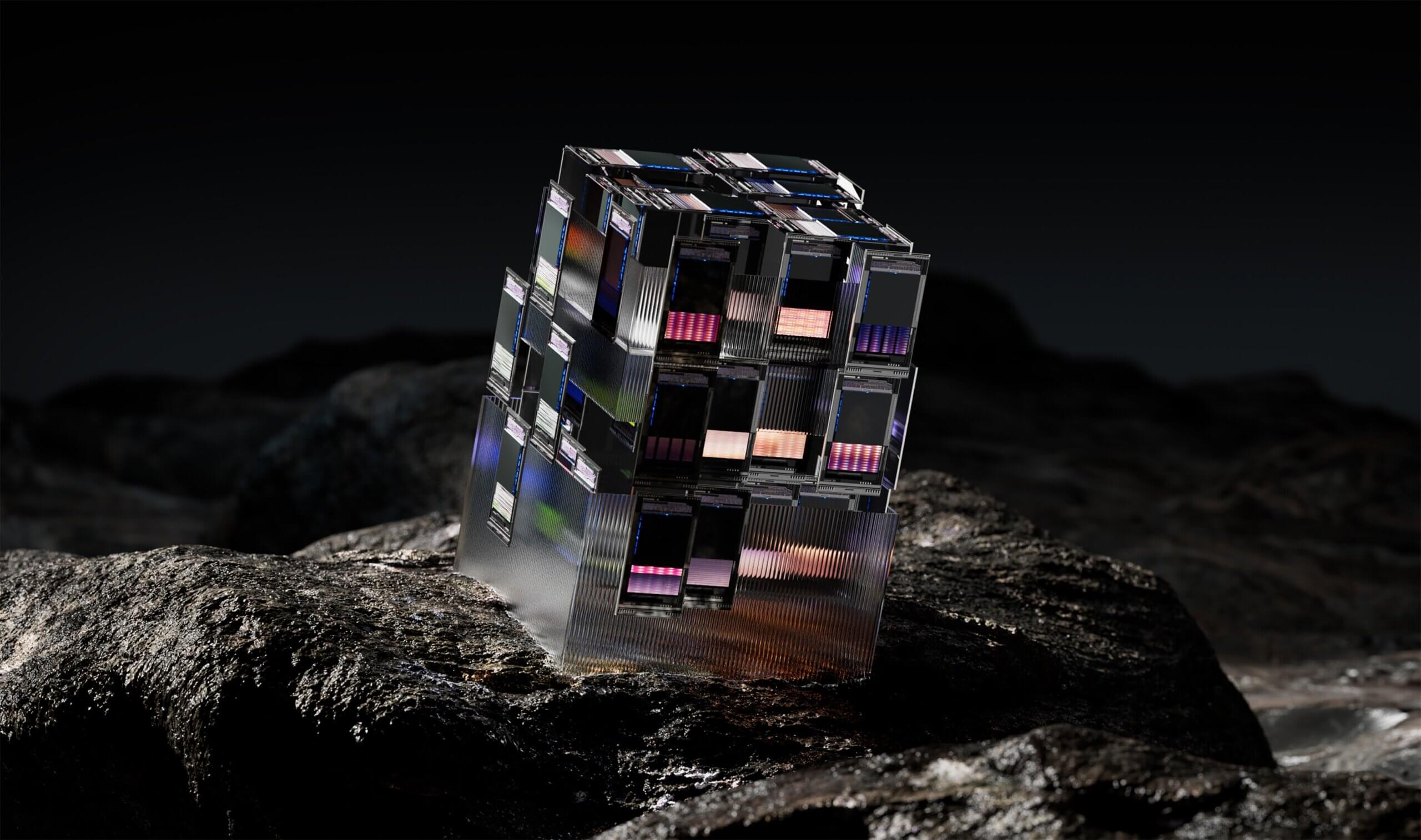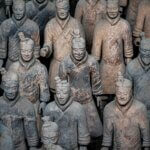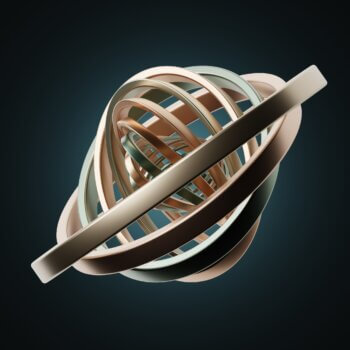Key Takeaway
Superconductors, which help mitigate energy loss to heat, are essential for efficient electronics and faster transportation. However, superconducting materials require intense pressures or extremely low temperatures, which can lead to resistance and energy loss. Researchers led by Ranga Dias, assistant professor of mechanical engineering and physics at the University of Rochester, have created a superconducting material that functions at just 1 GPa, a significant improvement over previous measurements. The team used a superhydride based on lutetium, a combination of hydrogen and heavier atoms, to create the material.
This new technology is “bigger than AI”, according to the scientists that created it. It promises to completely transform computing, energy, medicine, and the economy all at once. It’s as close as we can come to the scientific fantasy of the perpetual motion machine, a machine that will continue to do work without any energy input from us. Not only would it be the most important creation of the 21st century, it would bring about a second industrial revolution and save us billions of dollars each year from the energy grid alone.
We’re talking about the famous superconductors.
Superconductors are substances that help mitigate the energy we lose to heat. We see this problem everywhere, from phones to computers, airplanes to the electricity grid. A lot of the power we generate is lost in the transmission process, lowering the efficiency of the grid and our electrical appliances. But superconductors don’t have this problem. Because of the special properties of these materials, they can carry electricity without losing energy, resulting in a huge boost in efficiency and more powerful electronics. In some studies scientists were able to maintain an electrical current inside a superconducting ring for years without adding any additional energy to the current. These currents could theoretically flow forever, or at the very least for hundreds of thousands of years without losing their energy to heat or friction.
Faster transportation, more portable medical devices, more efficient electromagnets, a safer and more efficient energy grid — including uses in wind turbines and fusion power plants. A new era for the world.
“If you were to find a room-temperature, room-pressure superconductor, you’d have a completely new host of technologies that would occur — that we haven’t even begun to dream about.” Eva Zurek, computational chemist.
There is with all great things, of course, a price we must pay.
Superconducting substances have always required either intense pressures, or extremely low temperatures that reach almost absolute zero, the coldest possible temperature (-459.67° F or -273.15° C). This low temperature is the key to making materials superconducting: in such a cold state, the movement of atoms is reduced to almost nothing and this means electrons no longer collide with atoms to cause energy loss. There is no resistance. To cool these substances scientists employ liquid helium.
The alternative is to use tremendous pressure. Studies that managed to produce superconducting materials at higher temperatures (-94° F or -70° C) all required pressures of around 155 gigapascals (GPa). For reference, the pressure at the center of the Earth is 350 GPa, 3.5 million times the atmospheric pressure at sea level. The pressure at the deepest part of the ocean, the Mariana Trench, is 0.1 GPa. This means that the superconducting materials required half the pressure found at the planet’s core.
The dream then is to produce a superconductor at both room-temperature and room-pressure. And that is — almost — what scientists are now claiming to have done. While the superconducting material doesn’t function at exactly room-pressure, it does function at just 1 GPa, a tremendous improvement over previous measurements.
It caused an uproar in the scientific community when it was announced, but it also created a deep divide amongst scientists. Some refuted the claim altogether, others vehemently supported it. Supposing that the findings are true, physicist James Hamlin described it as, “an earth-shattering, groundbreaking, very exciting discovery.”
The researchers now under intense scrutiny are led by Ranga Dias, assistant professor of mechanical engineering and physics at the University of Rochester. To create their superconducting material, the team used a superhydride based on lutetium. Hydrides are a combination of hydrogen and heavier atoms (usually of sulfur or other metals), with the hydrogen being key for superconductivity. Carbon, nitrogen, and other atomic materials are also introduced in order to change the properties of the samples. This combination is necessary because hydrogen in its metallic form exhibits superconducting properties under immense pressure, but scientists discovered that by combining hydrogen with a few other elements, the new atoms would allow hydrogen to become a superconducting metal at more reasonable pressures. Hydrides have been used in research for many years, enabling scientists to achieve superconductivity at 8° F (-13° C) and 190 GPa.
Dias’ sample was a mixture of lutetium, hydrogen, and nitrogen that would be exposed to temperatures of 392° F (200° C) for days at a time. The sample would then be compressed using a diamond anvil cell with pressures around 2 GPa. The sample’s superconducting properties were tested routinely while the pressure decreased, with the team finding that these incredible properties remained intact even at just 1 GPa and ambient room temperature.
The samples were able to meet all the scientific requirements of a superconductor, including lowered resistance and the Meissner effect. This effect is a key property of superconductors and has to do with the substance’s ability to expel a magnetic field. It is exactly the kind of data scientists would hope to see when creating room-temperature, near room-pressure superconductors.
There is just one problem. It is the problem creating such an ardent divide in the scientific community: the team’s past.

Many of the team’s members have been accused of scientific misconduct, with a previous paper, published by Dias in the scientific journal Nature,being retracted due to controversy regarding the data. The paper noted how a carbonaceous sulfur hydride (CSH) became superconducting at 57° F (14° C) and 267 GPa. But the procedure regarding magnetic fields later contradicted the raw data released by Dias and co-author Ashkan Salamat, where they detailed a different — and unusual — method for dealing with magnetic interference.
Normally, the magnetic susceptibility measure of a hydride is taken while the sample is in a diamond anvil cell, meaning that it often contains background noise. Scientists take an independent measurement of the background and then subtract it from the raw data in order to give a final magnetic susceptibility reading. However, Dias and Salamat removed the magnetic interference in a novel and unorthodox way, leading some physicists to believe the data had been manipulated. Dias countered that it was not manipulated, only misunderstood.
Physicists then began to note that some data regarding the electrical resistance of the samples also seemed to be manipulated while another part of it remained undisclosed. There were allegations that the data in Dias’ paper was fabricated instead of observed. Dias’ place of work, the University of Rochester, conducted two investigations into the matter and sided with Dias at the end of the day. Neither have independent labs been able to reproduce Dias’ results from this paper, but this may be in part because these sort of laboratory tests can take time to fully reproduce.
Another team member, Mathew Debessai, also had a paper on superconductivity retraced due to claims of data manipulation. And Dias’ most recent papers on manganese sulfide are under allegations accusing Dias of copying-and-pasting data from unrelated research. Namely that the electrical resistance data from this recent paper was a copy of the data from Dias’ 2013 Ph.D. thesis. Salamat responded that the data was not copied but was simply similar, and that the comparison between data sets had been unfair.

Dias remains adamant that his data is authentic. He has continued conducting experiments at different laboratories across the country and has invited independent scientists to come and observe. He is confident the new paper he submitted to Nature will surpass his previous one, erasing any doubts others may still have regarding his work. A new member of Dias’ team, Nilesh Salke, attests that the material is, indeed, everything it claims to be. A milestone in the field of superconductivity.
Dias’ new paper has undergone an exceptionally rigorous peer-review process and then underwent further review from Nature. He has also submitted his raw data alongside the new paper in a show of vulnerability and openness, hoping to raise the confidence of disbelieving scientists. Due to Dias’ history, Nature was likely working overtime in assessing his work but decided to go through with publishing the paper on March 8. Many experts believe that Dias wouldn’t submit another paper that might be retracted, instead choosing to have faith in the physicist’s claims. Despite the team’s tumultuous past, they say, we should still take their data into consideration.
“The key fields that you wanted to provide, in order to prove superconductivity, is electrical resistance goes to zero, magnetic susceptibility — which is a demonstration of this expelling the magnetic fields — and heat capacity measurements. These are three different directions. In this paper, our group has done all three measurements, including submeasurements.” Ranga Dias.
While scientists are hoping that Dias sends out samples of his superconducting material to other labs for reproduction, Dias and Salamat have now founded Unearthly Materials, a startup with $20 million in backing from Spotify, OpenAI, and others. Their lutetium hydride is in the process of becoming patented so it is unlikely samples will be mailed out. Given its proprietary nature, the exact methods and procedures used by the team may also remain undisclosed. But despite all this, there is still hope. Dias and his team have provided clear instructions on how to reproduce the material in labs. They say they hope that labs go through with the reproduction process so that the field of superconductors can continue to grow and evolve. Some scientists have taken him up on that offer, others say they won’t waste their time.
If another lab is able to reproduce the result, it would open wide the door of opportunity for this new material. Not only to investigate the material itself — the structure, the ratio of its components, the insight it gives into theories of superconductivity — but also to investigate its applications in the everyday world. The blue dawn of new technology is approaching, if these results manage to escape a murky past.





























